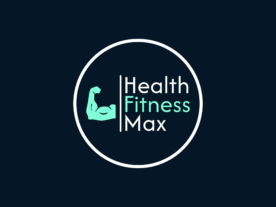
Cardiovascular Exercise: Benefits, Myths, and Effective Practices
Cardiovascular exercise, commonly referred to as cardio, plays a pivotal role in achieving and maintaining overall fitness. Beyond just burning calories, cardio offers a comprehensive range of health benefits, from boosting heart health to enhancing mental clarity. This article explores the full spectrum of cardio’s advantages, dispels common myths, and provides practical advice on incorporating effective cardio exercises into your routine.
The Benefits of Cardiovascular Exercise
Engaging in regular cardiovascular exercise is essential for a well-rounded fitness regimen. Let’s break down some of the scientifically-backed benefits:
1. Improved Heart Health
Cardio exercises, such as running or swimming, are vital for strengthening the heart muscle, enabling it to pump blood more efficiently. This improved function significantly reduces the risk of cardiovascular diseases, including heart disease, high blood pressure, and stroke. For example, long-distance runners often experience lower resting heart rates, a direct result of their consistent cardio regimen.
Source: American Heart Association
2. Effective Weight Management
Cardio is a powerful tool for weight management, especially when combined with strength training. Activities like cycling or high-intensity interval training (HIIT) can help create a calorie deficit, leading to weight loss and maintenance. I once had a client who shed 20 pounds over three months simply by integrating a mix of cycling and HIIT into their weekly routine.
Source: Mayo Clinic
3. Enhanced Lung Capacity
Cardio workouts significantly improve lung function, which increases your endurance and reduces fatigue. For instance, swimmers often notice a marked improvement in their lung capacity, allowing them to swim longer distances without tiring quickly. This enhanced respiratory efficiency is critical for anyone looking to improve their stamina across various physical activities.
Source: European Respiratory Society
4. Mental Health Benefits
Beyond the physical, cardio exercises also provide substantial mental health benefits. Many people, including myself, find that a good cardio session is the perfect remedy for a stressful day. Cardio releases endorphins, the body’s natural mood boosters, which help reduce stress, anxiety, and depression. I often recommend a 30-minute brisk walk to my clients who struggle with mental health issues as a natural way to improve their mood.
Source: Harvard Health Publishing
5. Better Sleep Quality
Regular cardiovascular activity promotes better sleep by helping you fall asleep faster and improving sleep quality. I noticed a significant improvement in my own sleep patterns after incorporating a routine evening walk into my schedule. This simple addition not only helped me fall asleep more quickly but also allowed for deeper, more restorative sleep.
Source: National Sleep Foundation
6. Increased Stamina and Energy Levels
One of the most noticeable benefits of cardio is the increase in energy levels and stamina. A client of mine, who initially struggled with daily fatigue, reported feeling more energetic and less exhausted after incorporating regular jogging into their routine. Cardio exercises like jump rope can dramatically boost your energy efficiency, making everyday tasks feel easier.
Source: Cleveland Clinic
7. Chronic Disease Prevention
Cardiovascular exercise is also crucial for preventing chronic diseases such as type 2 diabetes, certain cancers, and osteoporosis. My uncle, who has been an avid cyclist for decades, attributes his good health in his late 60s to regular cardio. The CDC supports this, noting that consistent cardio activity can significantly reduce the risk of these conditions by improving insulin sensitivity and reducing inflammation.
Source: Centers for Disease Control and Prevention (CDC)
Common Myths About Cardio
Despite its benefits, cardio is often surrounded by misconceptions. Let’s debunk some of these myths:
Myth 1: Cardio is the Only Way to Lose Weight
Truth: While cardio is effective for burning calories, it’s most beneficial when paired with strength training and a balanced diet. A well-rounded fitness routine that includes resistance exercises is key to maintaining muscle mass and boosting metabolism.
Source: National Institute of Diabetes and Digestive and Kidney Diseases
Myth 2: More Cardio Means Better Results
Truth: Overdoing cardio can lead to burnout and injuries. I once overtrained in preparation for a marathon, only to end up with shin splints that sidelined me for weeks. Balance is key; quality over quantity is crucial for sustainable progress.
Source: British Journal of Sports Medicine
Myth 3: Cardio Alone Can Build Muscle
Truth: Cardio is excellent for fat loss and cardiovascular health, but building muscle requires targeted strength training. I often recommend a mix of both to my clients who want to lose fat while preserving muscle.
Source: Journal of Applied Physiology
Important Health Factors to Consider
Before you dive into a cardio regimen, keep these crucial health factors in mind:
Starting Point
Beginners should ease into cardio, starting with low-intensity exercises like brisk walking. I recall starting my fitness journey with simple walks around the block, gradually increasing intensity as my endurance improved.
Intensity Levels
Balance is critical; combining HIIT with moderate-intensity cardio ensures progress without overexertion. My personal routine includes a mix of both to maximize benefits without risking injury.
Medical Conditions
If you have pre-existing medical conditions, consult a healthcare professional before starting any new cardio regimen. Tailoring your workout plan is essential for safety, particularly if you have conditions like heart disease or arthritis.
Hydration and Nutrition
Proper hydration and nutrition are vital. I always emphasize to my clients the importance of fueling their bodies correctly to support performance and recovery.
Rest and Recovery
Don’t underestimate the power of rest. Allowing time for rest and recovery is crucial to prevent burnout and injuries. I personally make sure to incorporate at least one or two rest days into my weekly routine.
Effective Cardio Exercises
Here are some popular and effective cardio exercises that can be tailored to any fitness level:
1. Running/Jogging
Benefits: Running is accessible and effective for burning calories and improving cardiovascular health. It’s one of the simplest ways to strengthen the heart and improve lung capacity.
2. Cycling
Benefits: A low-impact exercise that strengthens the legs, improves heart function, and boosts cardiovascular endurance.
3. Swimming
Benefits: Provides a full-body workout that’s gentle on the joints while enhancing lung capacity and cardiovascular fitness.
4. Brisk Walking
Benefits: Simple and low-impact, brisk walking is suitable for all fitness levels and supports heart health and weight management.
5. Jump Rope
Benefits: A high-intensity cardio exercise that improves coordination, endurance, and cardiovascular health.
6. Rowing
Benefits: Engages multiple muscle groups, offering an intense cardiovascular workout that strengthens the heart and tones the body.
7. Dancing
Benefits: Fun and engaging, dancing enhances heart health, overall fitness, and provides a creative outlet.
Conclusion
Cardiovascular exercise is more than just a workout; it’s a comprehensive approach to improving your overall health and well-being. By understanding the truth about cardio and integrating it thoughtfully into your routine, you can achieve a healthier, more active lifestyle. Remember to balance cardio with strength training, proper nutrition, hydration, and rest for optimal results and long-term benefits.
References
- American Heart Association – The Importance of Cardiovascular Exercise
- Mayo Clinic – Weight Management Through Exercise
- European Respiratory Society – Lung Health and Cardio Exercise
- Harvard Health Publishing – Mental Health Benefits of Exercise
- National Sleep Foundation – Exercise and Sleep Quality
- Cleveland Clinic – Stamina and Energy Levels
- Centers for Disease Control and Prevention (CDC) – Chronic Disease Prevention Through Exercise
- National Institute of Diabetes and Digestive and Kidney Diseases – Combining Cardio with Strength Training
- British Journal of Sports Medicine – Cardio Exercise: Quality vs. Quantity
- Journal of Applied Physiology – Building Muscle with Strength Training

